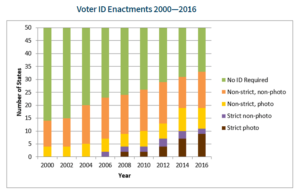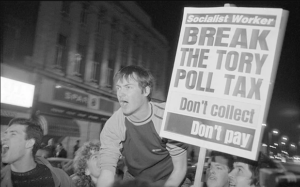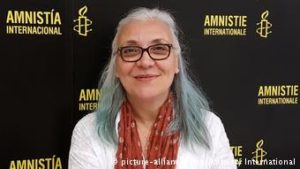
(FILES) This file photo taken on June 23, 2016 shows a logo of Brazilian construction company Odebrecht at the Olympic and Paralympic Village in Rio de Janeiro, Brazil. Brazil-based construction giant Odebrecht on December 21, 2016 agreed to pay fines of at least $2.6 billion to US, Brazilian and Swiss authorities, in what the US is calling the largest foreign bribery case in history. The US Justice Department said the conglomerate pled guilty to paying hundreds of millions to bribe government officials in countries on three continents.
/ AFP / YASUYOSHI CHIBA
LIMA. – Una norma que prohíbe trabajar con el Estado peruano a empresas que admitan actos de corrupción, como Odebrecht, podría desanimar a otras firmas implicadas a confesar irregularidades, para no quedar fuera de proyectos de infraestructura claves para la economía del país.
La brasileña Odebrecht admitió en un preacuerdo judicial que, al igual que en varios países de América Latina, en Perú pagó 29 millones de dólares en sobornos para ganar obras públicas. Mientras en Brasil o Estados Unidos pudo seguir contratando con el Estado tras ser multada y procesada, el gobierno de Pedro Pablo Kuczynski fue más drástico.
Un decreto de febrero del Poder Ejecutivo impide que firmas envueltas en corrupción, ya sea en Perú o en el extranjero, contraten con el Estado, que es usualmente el mayor cliente de muchas compañías.
La norma fue celebrada por políticos y la ciudadanía, que protestó contra Odebrecht y hasta quemó una caseta de peaje de una vía que construyó.
La brasileña se desprendió de un proyecto de transporte de gas de unos 5.000 millones de dólares y apunta a dejar sus participaciones en represas y vías.
De acuerdo con esta ley, nada puede ser vendido ni transferido si el Estado no ha dado su visto bueno, porque antes tiene que garantizar la reparación civil, aún en cálculo. La firma tiene en Perú activos por 2.500 millones de dólares.
Limita las confesiones
Después de Odebrecht, ninguna otra firma presuntamente implicada en corrupción se ha acercado a la justicia de Perú. Para algunas autoridades, la norma podría estar teniendo un efecto contrario al deseado.
“Es importante reflexionar sobre esta norma, porque una empresa es más que sus socios, tiene que ver con sus empleados, con sus proveedores, con sus consorciados, y desde luego con la propia sociedad”, ha dicho el defensor del pueblo, Walter Gutiérrez, en una conferencia con la prensa extranjera.
“Esto de manera alguna quiere decir que no paguen las multas y que los que han cometido delitos dejen de asumir sus responsabilidades penales. Pero nos preocupa esta medida, porque podría detener el flujo de información, y generar problemas para la investigación”, agregó.
En el mundo, firmas como Volkswagen han reconocido irregularidades, pagado sus culpas y seguido operando, recuerda Gutiérrez. Menciona incluso que “un software que sirve para hacer seguimiento al lavado de activos, utilizado por muchos países en Europa y Estados Unidos, pertenece a IBM, que también ha sido sancionada en su momento por corrupción (en Argentina)”.
El propio juez brasileño del caso “Lava Jato”, como se conoce a este megaescándalo de corrupción, Sergio Moro, dijo a su paso por Lima que el comportamiento de las empresas que reconocieron delitos, “debe ser estimulado”, y pidió “no sancionarlas más severamente” que a aquellas que no han suscrito acuerdos, pues ello puede desincentivarlas.
Daños colaterales
Odebrecht redujo su fuerza laboral en Perú de 20.000 a 4.000 trabajadores en el último año. El embargo de sus cuentas generó una ruptura de la cadena de pagos con deudas por unos 450 millones de dólares a unos 700 proveedores.
“La corrupción tiene que acabar y los responsables ir a la cárcel. Pero nadie prevé el problema social. Los ejecutivos implicados ya están pagando, por qué tenemos que sufrir los trabajadores”, dice a la AFP César Sarria, gerente de Comunicaciones, a nombre de los trabajadores de la firma.
Lo que empezó como una norma ejemplificadora, salpicó a empresas peruanas que trabajaron en consorcio con la brasileña. La Procuraduría considera que las peruanas Graña y Montero, J.J Camet e Ingenieros Civiles y Contratistas Generales conocían del pago de 20 millones de dólares que se le hizo al entonces presidente Alejandro Toledo para ganar la licitación de la carretera interoceánica, que une Perú con Brasil.
Graña, el mayor grupo constructor del país, vio afectadas sus finanzas. Ha lamentado que los peruanos “se hayan sentido defraudados por la empresa”, de 28.000 trabajadores, y encargado investigaciones internas, pero no admite culpas.
Las constructoras hoy son vitales para el Perú. La reconstrucción por inundaciones a causa de “El Niño Costero” demandará una inversión de hasta 9.000 millones de dólares, según ha dicho el gobierno.
“Más que prohibir, insto a esas empresas (implicadas con Odebrecht) a no participar en los procesos (de licitación) durante la reconstrucción”, ha dicho el presidente del Consejo de Ministros, Fernando Zavala.
La poderosa oposición fujimorista, que controla el Congreso, plantea modificar el decreto del Ejecutivo para que también queden impedidas de contratar con el Estado empresas investigadas, aún sin sanción.
Varios proyectos están detenidos, a la espera de claridad.
El rubro de construcción se contrajo un 3,81% en marzo. “Vamos a salir a un rubro parado a buscar empleo”, asegura Sarria.
En: eldia.com.do








